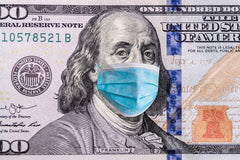Your cart is currently empty.
Free ($50 value) Laptop Stand on Orders Over $1,000
Free shipping on orders over $50

- Jun, 23 , 20
- 0 comments
How Do Banks Dispose Of Damaged Currency?
Contents
Money - something that everyone will come into contact with in their lifetime. The majority of money in circulation is fit to be exchanged among consumers and service providers. However, mutilated currency, unfit currency, and counterfeit money are also in circulation. Damaged currency is money that has been destroyed to such a degree that its value is called into question. The United States Treasury Department receives 30 000 claims annually and redeems damaged currency at a value of over $30 million. Redeeming damaged currency comes at no cost to the consumer. There are a variety of ways in which currency can be damaged including fire, water, chemicals, animals, insects and decay, and petrification as a result of burying money. Some of these damaged bills are so badly affected that they pose a challenge even for advanced bill counting machines to accurately assess their value. Coming into contact with fake bills is very rare, but may happen. The following article will look at what to do with damaged and counterfeit money and how banks handle this issue.
What to do with torn money and fake bills
Coming across torn paper currency can leave you wondering what to do next. Should it be thrown away or given in somewhere? The answer is that it depends on how the money was damaged in order to determine what to do next. Money is placed into circulation by the Federal Reserve System (FRS) which has a total of 28 cash offices dispersed across the United States. They are responsible for placing money in circulation and have the responsibility to take the damaged banknotes out. The majority of money, 85%, that gets deposited with the FRS is seen as fit for circulation. The defective 15% is weeded out with the help of specialized machines or manual inspection of the damaged notes.

It is important to be aware of the differences between ‘unfit’ and ‘mutilated’ currency. The former is:
- A note with holes totaling more than 19 square millimeters, or the size of an aspirin;
- Dirty and worn out bills that can be detected with sensors;
- Fives, tens and twenty-dollar bills that were brought into circulation before 1996.
While the latter might have been severely damaged by:
- Water
- Chemicals
- Animal/insect/rodent damage
- Deterioration by burying
If one comes across a note that is believed to be unfit to remain in circulation, it is possible to have your damaged currency exchanged at your nearest bank. Unfit notes are removed from circulation and taken to the Federal Reserve Bank in St. Louis where they will be shredded, recycled, or made into compost. What to do with a mutilated bill follows a slightly different procedure. It is recommended to contact the US Bureau of Engraving and Printing (BEP) directly, and they will advise on how to redeem mutilated currency along with how to file a claim.
The chances of being given counterfeit money via an ATM are extremely slim. The US Federal Reserve states that less than 0.01% of money in circulation can be characterized as fraudulent. Fake bills are not easily recognizable by people who are not trained to look for specific security features such as:
Upon receiving a counterfeit note, it is critical to first contact your local police department or your local Secret Service office. It is important to handle the note as little as possible. Will a bank replace a counterfeit bill? This is often very unlikely.
What do banks do with damaged and fake currency?
Banks have strict rules around damaged currency exchange and whether they will offer a ripped money replacement. Certain banks accept and exchange notes that have been torn or soiled. The rules that banks follow have been created by the BEP and require:
- Over half of a bill must be distinguishable as money belonging to the United States. There should also be clearly visible remains of the note’s security features; or
- If less than half of a note, recognizable as money of the United States, is presented, the reason for the note’s mutilation must be proven to the Treasury along with proof that the lost half of the note has been destroyed.
After the relevant assessment has been conducted by currency experts to determine the value and authenticity of the note, a check can be issued to the consumer, and the mutilated money will be shredded.

Once a bank is made aware of counterfeit money, it is obligated to seize the money in question and give it to the Secret Service who will launch an investigation and take the money out of circulation. The Secret Service views counterfeit money as a growing threat in the US and remains vigilant in order to halt the growing tide of fraudulent notes. Last year $58 million worth of fake bills was seized.
Conclusion
During your lifetime, it is likely that you will come into contact with money that has been damaged to some extent. It is less likely, but also possible, that you might encounter fraudulent currency. Whichever of these crosses your path, it is important to be able to identify damaged currency, be aware of the protocols that need to be followed, and the institutions that should be alerted.
Search
Custom Menu
Recent Post
Archive
- April 2022
- September 2021
- July 2021
- February 2021
- December 2020
- September 2020




